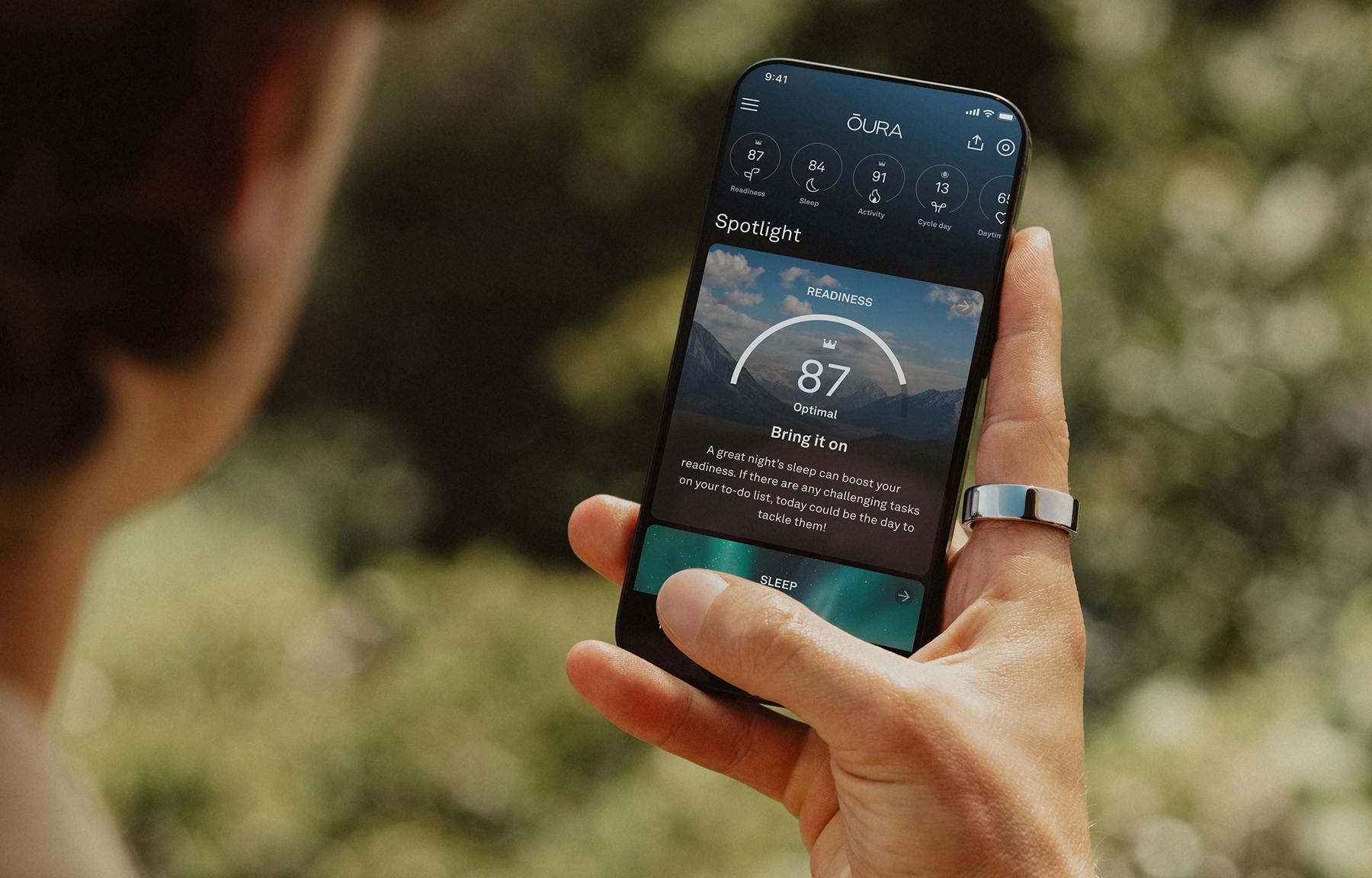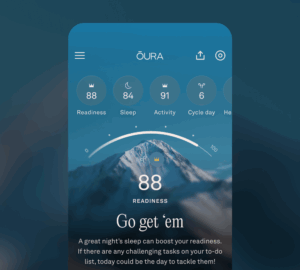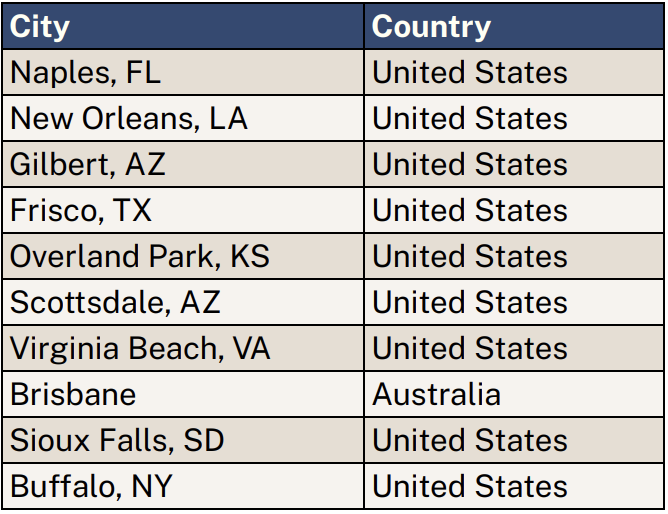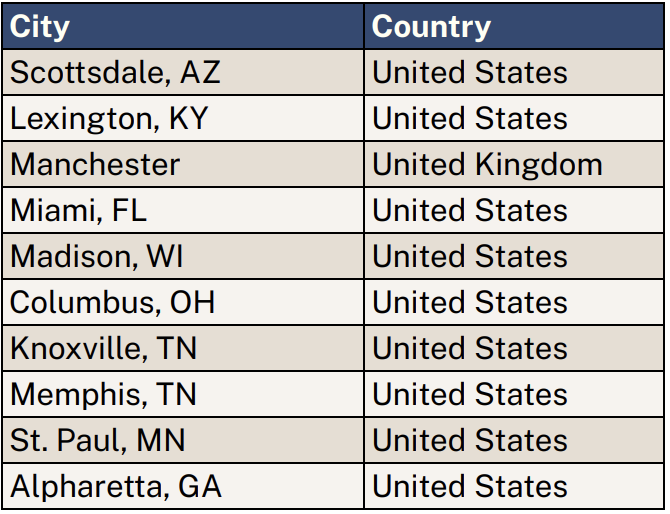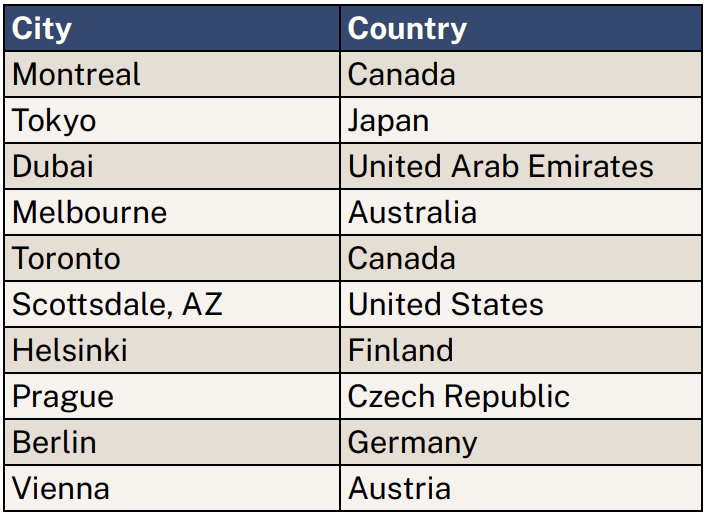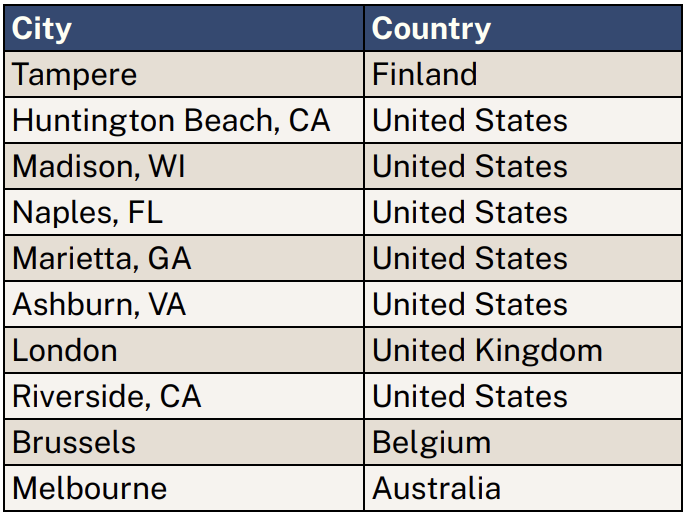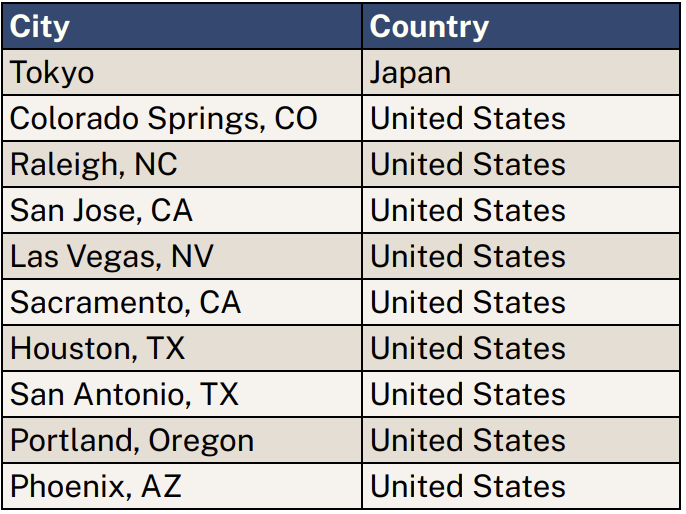Oura Ring offers a wealth of personal data, tracking more than 50 biometrics and providing tailored insights to improve your health—from sleep and stress to heart health and activity.
To better understand how joining Oura impacts members’ biometrics, Oura’s Data Science team recently analyzed aggregate and de-identified global member data from January 2023 to March 2025.*
The findings reveal the top locations where members have seen the most significant average improvement metrics tracked by Oura—including sleep duration, step count, resting heart rate (RHR), heart rate variability (HRV), and stressed minutes.
Ultimately, the improvement in health metrics in these locations is likely less about a specific geographical similarity—and more about the members in these locations becoming more aware of and actively working to improve their health habits after joining Oura.
Still, among these top-performing locales, interesting commonalities came to light including a temperate climate, access to green space, and cultural attitudes toward wellbeing.
*This analysis was limited to cities with at least 1,000 Oura members (and up to tens of thousands) during that time range. Rankings are determined by maximum monthly average improvement among members up to six months after starting an Oura Membership.
Overall Geographic Similarities
While the top locations differ in many ways, several interesting parallels among the top-ranking geographies stood out, including temperate weather, local infrastructure that supports healthy living, a culture that emphasizes wellbeing, and potentially self-selecting demographic similarities.
Favorable Climates
Regions boasting mild to moderate temperatures appear to foster more active lifestyles among Oura members. This suggests that warmer weather encourages year-round walkability and provides more consistent opportunities for outdoor exercise.
Supportive Local Infrastructure and Green Space
Cities prioritizing accessible green and recreational spaces and efficient public transportation show notable positive impacts on Oura members’ health metrics. Furthermore, these environments correlated with lower resting heart rates (RHR) and improved heart rate variability (HRV), indicating enhanced cardiovascular health and stress resilience.
Cultural Emphasis on Wellness
Many of the cities and countries that emerged seem to have a cultural focus on wellbeing—for instance, several of the U.S. cities are located in regions for outdoor recreation opportunities, such as California, Florida, and the Midwest. Similarly, many of the global cities, such as Tokyo, Melbourne, Brisbane, Toronto, and Montreal, are known for having high qualities of life, with public transportation, parks, and a community emphasis on wellbeing.
Similar Demographics
A final angle to consider is the potential self-selection of Oura members in these areas. It’s possible that the individuals drawn to using a health wearable like Oura in these specific locales tend to be more proactive about managing their wellbeing, including sleep, steps, stress, and heart health.
Top 10 Cities With Biggest Gains in Total Sleep Duration
In the U.S., members in the “Sunbelt” states of Florida, Louisiana, Arizona, and Texas topped the list in terms of greatest average improvement in total sleep duration.
While sleep duration is heavily influenced by individual lifestyles, work culture, stress levels, and personal habits, one similarity among several of the cities listed is a temperate climate. It’s possible that individuals in these areas might have more active lifestyles that include outdoor activities, potentially benefitting their sleep habits.
Another aspect to consider is the general pace of life and cultural norms in these areas compared to more major metropolitan areas. This could contribute to lower overall stress levels, which can positively impact sleep duration.
LEARN MORE: 9 Daily Habits to Help You Sleep Better at Night
Top 10 Cities With Higher Daily Step Counts
Many of these locales are located in warmer or milder climates, which can encourage outdoor activities year-round. This does contrast with cities like Madison, WI, Manchester, and St. Paul which have significant winter seasons.
Furthermore, several of these locations are known for their outdoor recreational opportunities. For example, Scottsdale and Miami offer numerous options for hiking, biking, and water sports. Lexington and Knoxville are situated near areas with natural beauty that might encourage walking and exploring. Even the cities in colder climates do have access to outdoor activities, such as the surrounding areas in Minnesota and Wisconsin.
RELATED: How Grounding & Forest Bathing Can Benefit Your Health
Top 10 Cities With Improved Resting Heart Rates
Your resting heart rate (RHR) is a powerful indicator of your cardiovascular health and overall fitness. A lower RHR generally signifies a more efficient heart and is associated with a healthier cardiovascular system.
While individual factors like exercise and sleep are primary drivers of RHR, the environment can also play a subtle but significant role.
Many of these global cities are known for having a high quality of life, which often correlates with access to good healthcare, green spaces, and opportunities for physical activity. Plus, cities with well-developed public transportation and pedestrian-friendly infrastructure in Europe and Canada might encourage more walking and lower stress levels associated with commuting.
Additionally, Tokyo, while a bustling metropolis, has reliable, efficient public transport and scores high in walkability, which could contribute to a baseline level of activity. Dubai, while often associated with a hot climate, has invested in indoor fitness facilities and a generally high standard of living, potentially influencing health behaviors.
LEARN MORE: What Is the Average Resting Heart Rate?
Top 10 Cities With Improved HRV
Heart rate variability (HRV) is influenced by a complex interplay of factors like sleep, stress, recovery, and fitness. It’s linked to the autonomic nervous system, with higher HRV associated with rest and recovery and lower HRV with stress, overtraining, or illness.
While it’s difficult to pinpoint specific factors that lead to HRV improvements in these locales, some potential overlapping characteristics arise from this group of cities that could contribute to a generally healthier lifestyle, which in turn often correlates with better HRV.
Several of these locations (such as Huntington Beach, Madison, Naples, Ashburn, and even London to some extent with its parks) offer access to natural environments and opportunities for outdoor activities. Regular engagement with nature and exercise in these settings can positively impact the autonomic nervous system, potentially leading to improved HRV.
Similarly, Finland is known for its high quality of life and clean environment, which could contribute to better overall health. Some of these cities might offer a balance between urban amenities and a less frantic pace of life compared to major metropolises; for example, while London and Brussels are major cities, they also have strong community pockets and access to more tranquil areas.
RELATED: 8 Ways to Improve Your HRV, According to Oura Members
Top 10 Cities With Fewer Stressed Minutes
Physiological stress can come in many different forms—both beneficial and harmful!—so it’s important to note that individual factors play a significant role in how many stressed minutes Oura members see in their Daytime Stress graph.
Yet one commonality among these geographies is a shared access to outdoor space and nature, which is linked to stress reduction. For instance, Colorado Springs and Portland are located near significant mountain ranges, while Phoenix and the California cities have access to expansive parks and outdoor recreation.
Additionally, some of these places might share a value of wellbeing—the cities in California and Oregon, for example, have a reputation for a greater emphasis on wellness, which could translate to more accessible resources for stress management (e.g., yoga studios, mindfulness centers, healthy food options). Even Tokyo, despite its density, is known for its efficient public transport and walkability.
RELATED: 12 Science-Backed Ways Oura Members Lower Their Stress Levels





